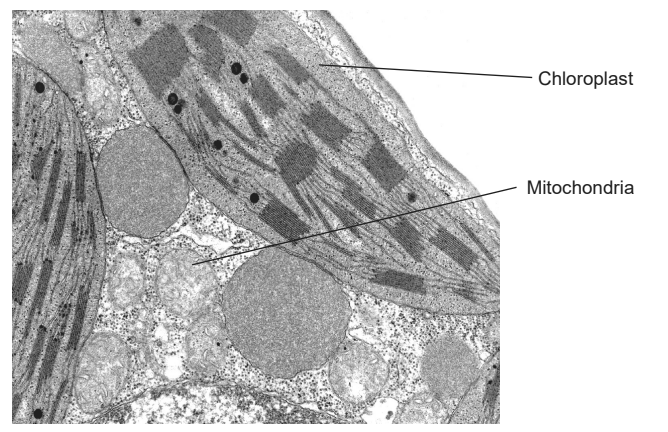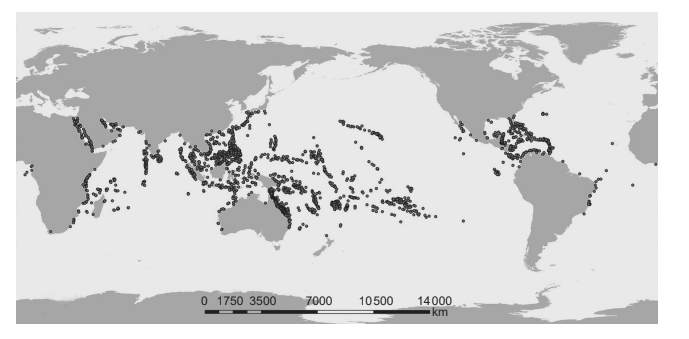Question
The image shows part of a plant cell with a chloroplast in close proximity to mitochondria.

(a) State two structural similarities between mitochondria and chloroplasts. [2]
1.
2.
(b) Compare and contrast mitochondria and chloroplasts in terms of the substrates they use and the products they produce. [2]
(c) Outline how the compounds produced by chloroplasts are distributed throughout the plant.
Answer/Explanation
Ans:
a)
a. (a loop of) DNA $\checkmark$
b. $\underline{70 S}$ ribosomes $\checkmark$
c. double membrane $\checkmark$
d. electron transport chains/enzyme complexes in (internal) membranes $\checkmark$
e. enzymes in a region of fluid/in stroma and matrix $\checkmark$ large area of (internal) membrane/cristae and thylakoids $\checkmark$
b)
a. ATP produced by both / ADP used by both $\checkmark$
b. oxygen produced by chloroplasts and used by mitochondria $\checkmark$
c. carbon dioxide produced by mitochondria and used by chloroplasts $\checkmark$
d. carbon/organic compounds built up in chloroplasts/anabolism and broken down in mitochondria/catabolism $\checkmark$
c)
a. in phloem $\checkmark$
b. loading into sieve tubes/by active transport/by cotransport/by companion cells $\checkmark$
c. entry of water (to phloem) by osmosis/because of high solute concentration $\checkmark$
d. causes high/hydrostatic pressure $\checkmark$
Question
The map shows the widespread distribution of coral reef ecosystems (indicated by black dots) in the world’s oceans. Death of coral reefs is related to increasing atmospheric carbon dioxide concentrations.

(a) Explain how increased atmospheric carbon dioxide concentrations can lead to coral death.
(b)The image shows part of the food web for a coral reef. Lines show the relationships
for energy between organisms in the web.
Removed for copyright reasons
(i) Identify the trophic level of the detritivore, based on this food web.
(ii)Detritus accumulates on coral reefs damaged by ocean acidification.
Suggest two possible impacts of an increase in detritus on the organisms in this food web.
Answer/Explanation
Ans:
a)
a. carbon dioxide dissolves in oceans/seawater
b. carbonic acid formed/equation/lowers pH/makes water acidic
c. prevents deposition of calcium carbonate/causes calcium carbonate to dissolve
d. skeleton of (hard) corals degraded
e. carbon dioxide is a greenhouse gas/causes warming/increases temperatures
f. warmer oceans cause corals to expel zooxanthellae
g. bleaching due to death/expulsion of mutualistic organisms/algae Allow zooxanthellae instead of algae in mpf Reject reacts and diffuses instead of dissolves in mpa
b (i) primary consumer/first consumer/heterotroph Second trophic level is not enough to get the
b (ii)
a. detritus feeders/named example of detritus feeder get more food/increase (in number)
b. animals/named example of animal feeding on detritus feeders get more food/increase
c. herbivores feed more on detritus so macroalgae/turf algae increase
OR
coral cryptic fauna feed more on detritus so turf algae increase
OR
more herbivores so macroalgae/turf algae decrease
OR
more coral cryptic fauna so turf algae decrease
d. blocks light for/reduces growth of producers/macroalgae/turf algae OR blocks light penetration to algae inside (hard) corals e. feeding problems for corals/ filter-feeders
OR
